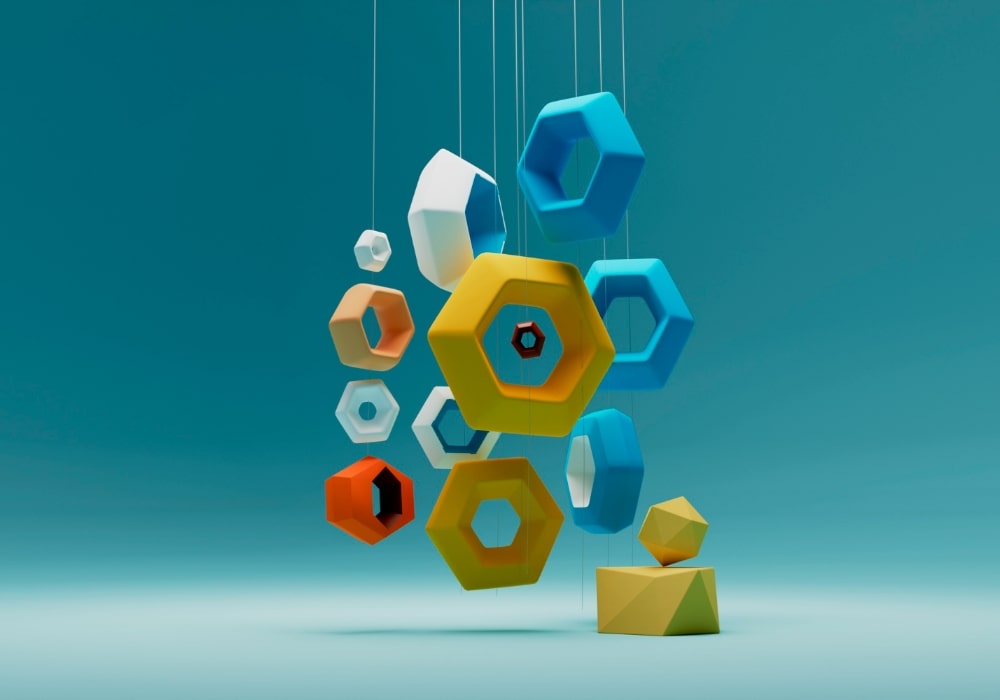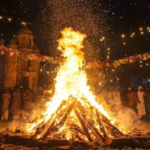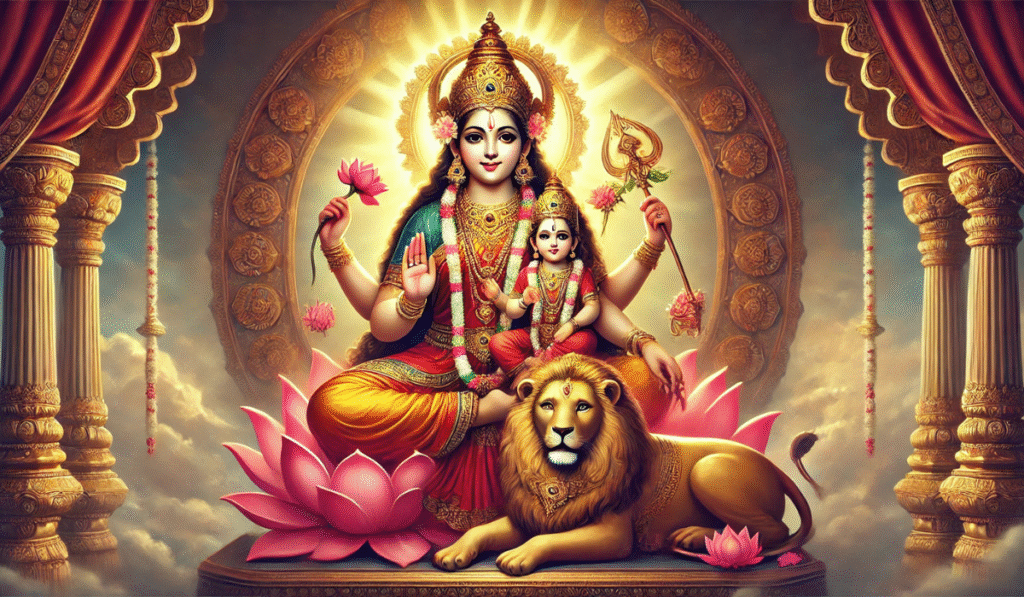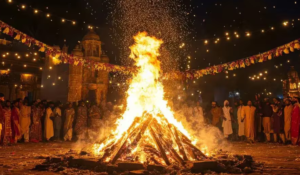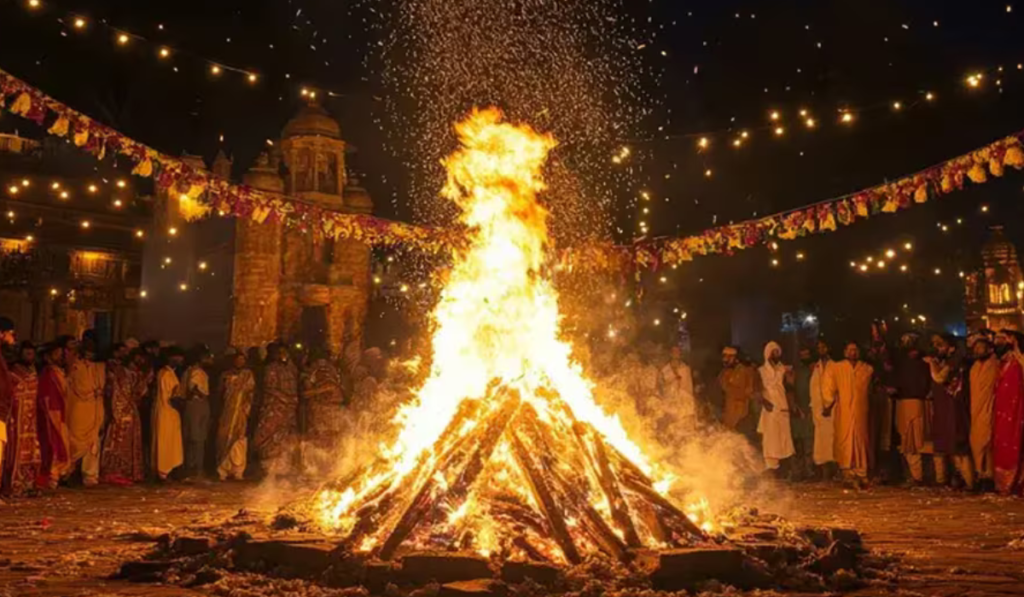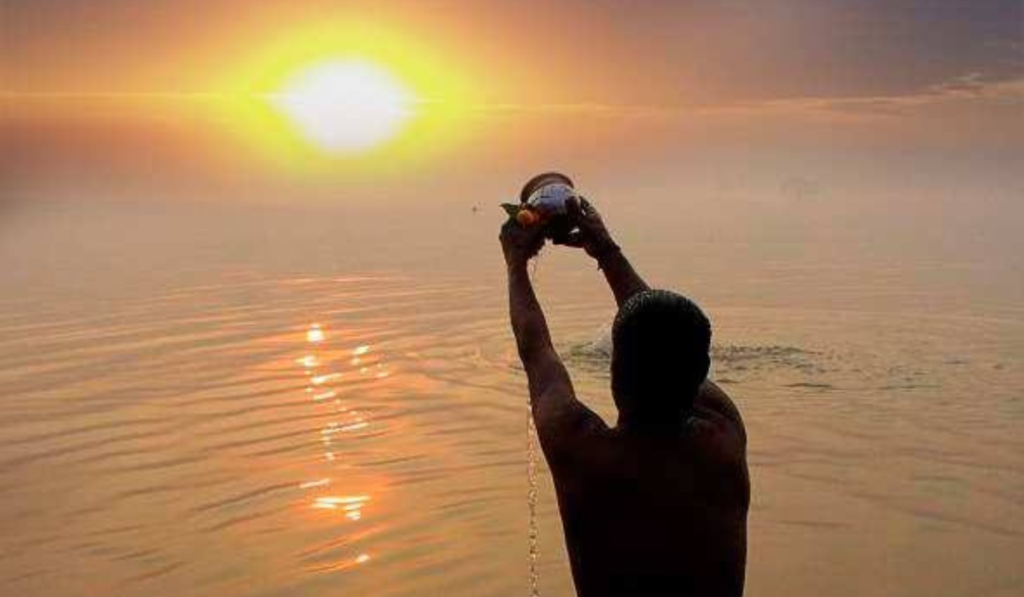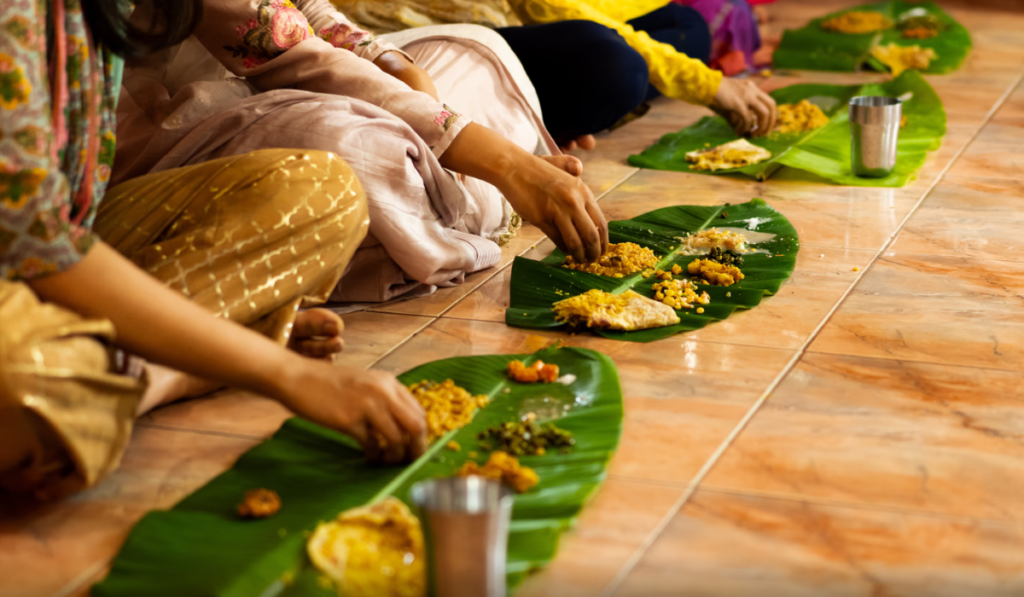Each day reveals a new roop of Adi Shakti, grounding us, disciplining us, filling us with courage, and helping us rise higher in spirit. On the fifth day of Navratri, we bow to Maa Skandamata, the embodiment of a mother’s boundless love, patience, and strength.
She is called Maa Skandamata because she is the mother of Lord Skanda, also known as Kartikeya or Murugan, the commander of the divine armies. But beyond her name, her form teaches us something universal that motherhood is the highest strength and the cosiest shelter at the same time.
But why and how Maa Parvati became Skandamata? Let us explore her story, her symbolism, and the deep devotion behind worshiping Maa Skandamata on this sacred day.
Who is Maa Skandamata?
In Sanskrit, Skanda is the first name given to Kartikeya, the warrior son of Mahadev and Maa Parvati. Mata means mother. Quite literally, she is the mother of Skanda.
Our ancient scriptures, Markandeya Purana and the Devi Bhagavata Purana, describe Maa Skandamata as the fifth roop of Navdurga. The story goes that when the demons, led by Tarakasura, became invincible, only the son of Bhagwaan Shiv and Maa Parvati could defeat them. To seek help, devas turned to Shiv and Shakti. From the energy of tapasya of both, Skanda was born, destined to be the commander of the divine army.
She is depicted seated gracefully on a lion, carrying her infant Kartikeya in her lap. This form beautifully shows us that she is both a nurturing mother and a fierce protector. Her presence reminds us that a mother’s love is never weak. It carries within it the strength to fight entire battles if needed.
The Tail of Maa Skandamata and Skanda
Why is Maa Parvati’s form named after her son Skanda? How and why did she become Skandamata?
To understand this, we need to go back before Skanda, Kartikeya was even born.
After Maa Chandraghanta destroyed the demon Jatukasura, the devas thought the troubles were over. But one bigger threat still remained, Tarakasura. He had a strange boon that only the son of Shiv and Parvati could defeat him. So everyone, gods, sages, even the universe itself, waited for that child to be born.
To prepare for this, Shiv ji and Maa Parvati went into deep tapasya together. Their penance was so powerful that a ball of divine fire burst out from their tapas. This wasn’t an ordinary fire; It was filled with taposhakti, impossible to handle even for Agni Dev.
Agni dev carried it, but the flame was too intense. He passed it to Maa Ganga, but even she couldn’t hold it. Finally, she placed it in a forest of reeds called Saravana. There, from that divine fire, a baby was born, Skanda. He was raised and nurtured lovingly by the Krittikas. This is why Skanda is also known as Krittikeya.
But why Maa Parvati, herself, not carry Skanda in her womb?
It is because, in the Bhagavata Puran, it is mentioned that Diti, the mother of all daityas, cursed Maa Parvati that she would face tremendous difficulties in becoming a mother. That’s why she embraced Krittikas with the upbringing of Kartikeya.
Later, after years, Maa Parvati came to the forest. The moment she saw the child, her heart melted. She lifted him in her arms, pressed him close, and claimed him as her own. From that instant, she became Maa Skandamata, the Mother of Skanda, the mother of Kartikeya.
But why did Parvati take this form? Because the world needed not just a warrior, but also a mother’s touch. Skanda was born to lead the army of devas and defeat Tarakasura. But before he could become a warrior, he needed a mother to guide him, nurture him, and fill him with love.
That’s why Parvati revealed herself as Skandamata, the gentle yet powerful mother, who shows us that motherhood itself can change the destiny of the universe.
How is Maa Skandamata depicted?
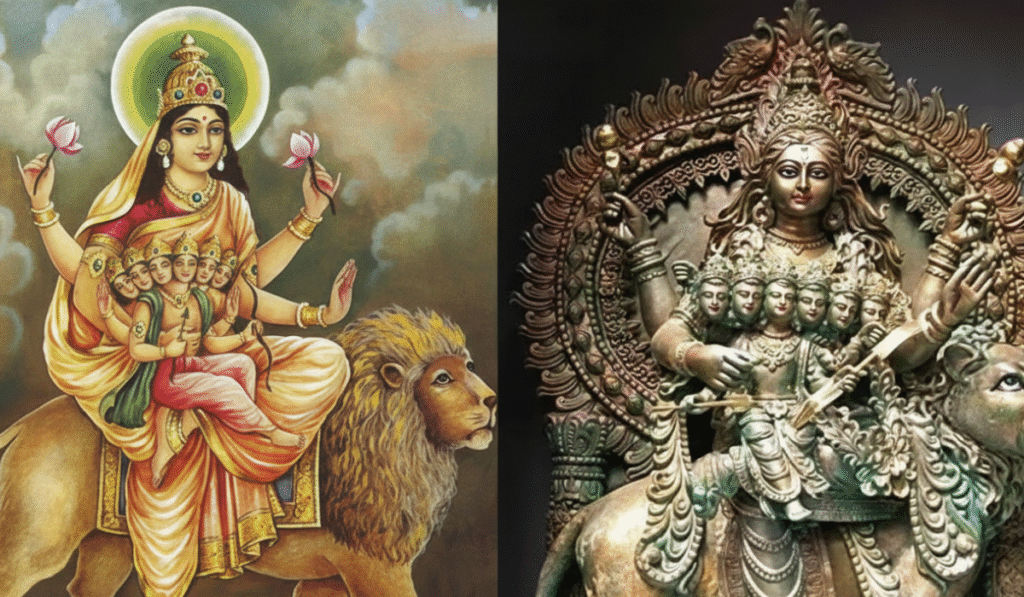
Maa Skandamata has shown with four divine arms.
- In two hands, she holds blooming lotus flowers, signs of purity, blessings, and divine grace.
- In one hand, she carries her son Skanda, symbolizing eternal motherhood.
- With the fourth hand, she shows Abhay Mudra, assuring devotees, Never fear, I am always here to protect you.
Her serene face radiates gentleness, but the lion she rides on reminds us that her calmness should never be mistaken for weakness. She can nurture with one hand and fight with the other. That’s the dual power of a mother. When devotees look upon her murti during Navratri, they don’t just see a goddess. They feel the same comfort a child feels when resting in their mother’s lap.
Why Do We Wear Green On Navratri?
The fifth day of Navratri is dedicated to the nurturing form of Maa Skandamata, and the color of the day is Green. But in many regions of Bharat, the 5th day is also associated with white color, but mostly green. The green color symbolizes growth, harmony, and healing energy.
It reflects a mother’s unconditional love and her ability to nurture life. Just as nature flourishes under the shade of green, devotees believe that wearing this color on Day 5 invokes Maa Skandamata’s ashirvaad of prosperity, peace, and well-being.
Worshippers dress in shades of green to honor her divine motherhood and to attract balance in relationships, renewal of energy, and emotional healing. It’s a reminder that, like a mother’s embrace, green brings comfort, protection, and the strength to grow in the right direction.
Mantras and prayers for Maa Skandamata
To be blessed with Maa Skandamata’s ashirvaad. Devotees continue with kalash sthapana, light the akhand jyot, and offer flowers, fruits, and prasad to Maa. On this day, it is common to offer white flowers and fruits, symbolizing purity and motherly care. Mantras for Maa Skandamata:
Beej Mantra
ॐ देवी स्कन्दमातायै नमः॥
Om Devi Skandamatayai Namah॥
Prarthna
सिंहारूढ़ा चतुर्भुजा स्कन्दमाता यशस्विनीम्।
शंख चक्र गदा हस्ता या देवी पद्मासना॥
Simhaarudha Chaturbhuja Skandamata Yashasvinim।
Shankh Chakra Gada Hasta Ya Devi Padmasana॥
Stuti
या देवी सर्वभूतेषु माँ स्कन्दमाता रूपेण संस्थिता।
नमस्तस्यै नमस्तस्यै नमस्तस्यै नमो नमः॥
Ya Devi Sarvabhuteshu Ma Skandamata Rupena Samsthita।
Namastasyai Namastasyai Namastasyai Namo Namah॥
Chanting her name with devotion will cleanse the heart and bring motherly blessings in abundance.
Conclusion
Day 5 with Maa Skandamata is a day of surrendering to motherly love, while also embracing the strength hidden within it. She shows us that compassion is not weakness. It is the greatest power.
But Navratri is a journey, and tomorrow we move forward to the sixth form of Maa Durga: Maa Katyayani, the warrior goddess who is known for her fierce energy.
Why is Maa Katyayani considered one of the most powerful forms of Durga? What story connects her with the demon Mahishasura? And how does worshiping her bring courage and victory to her devotees?
Stay with us as we uncover the next chapter in the journey of Navdurga.
Let’s stay connected! Come say hi on Instagram or follow us on Facebook for daily inspo.


